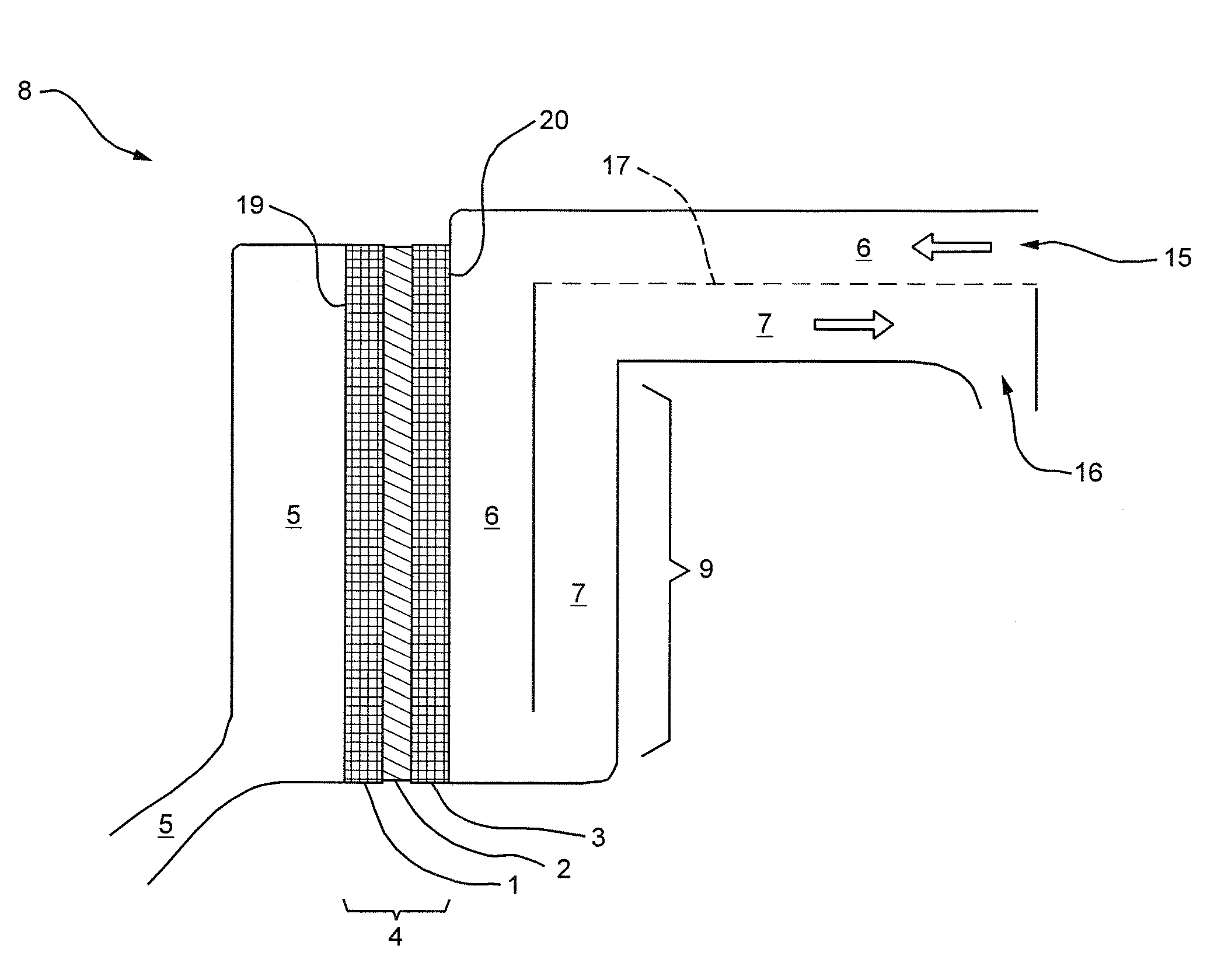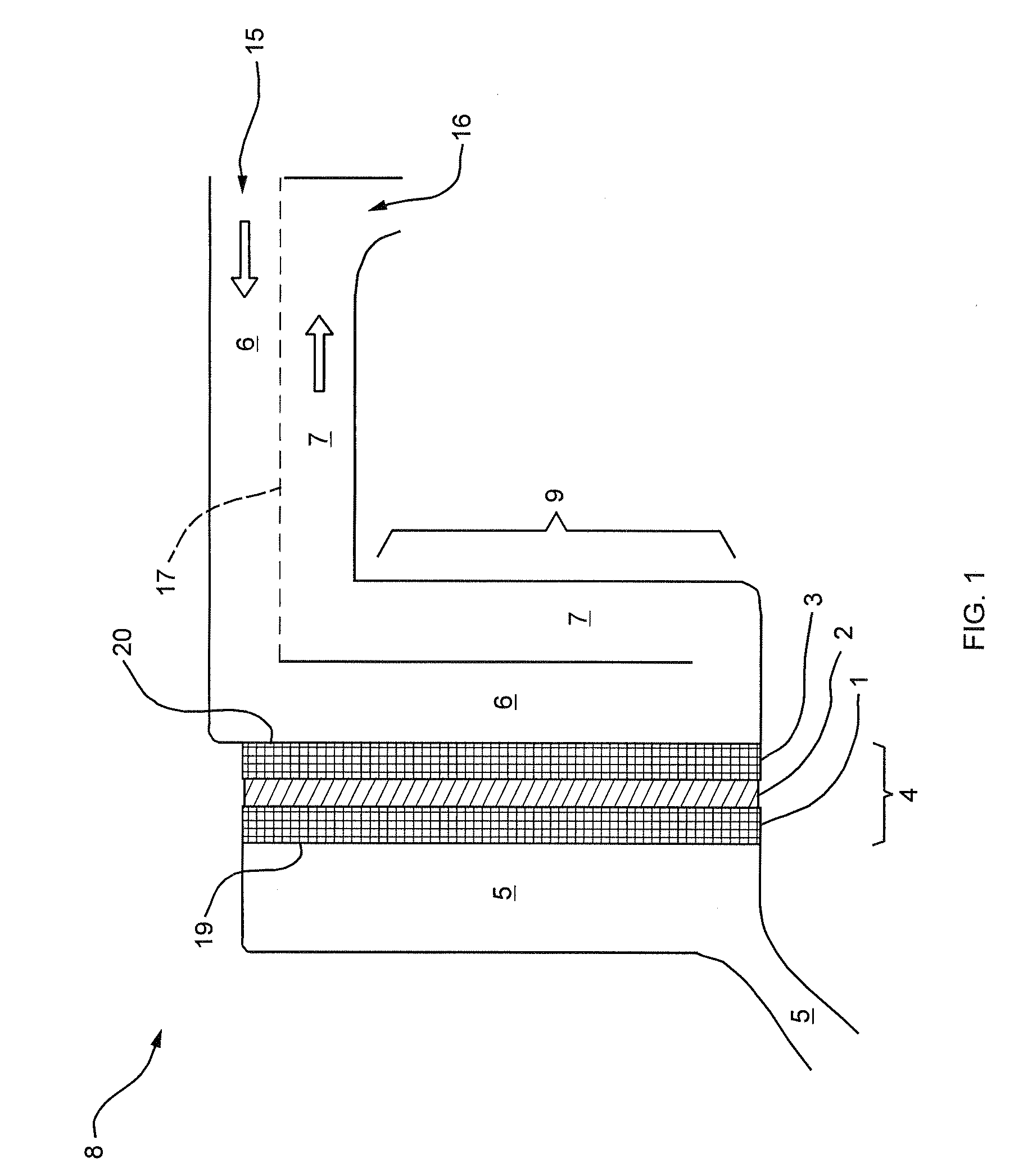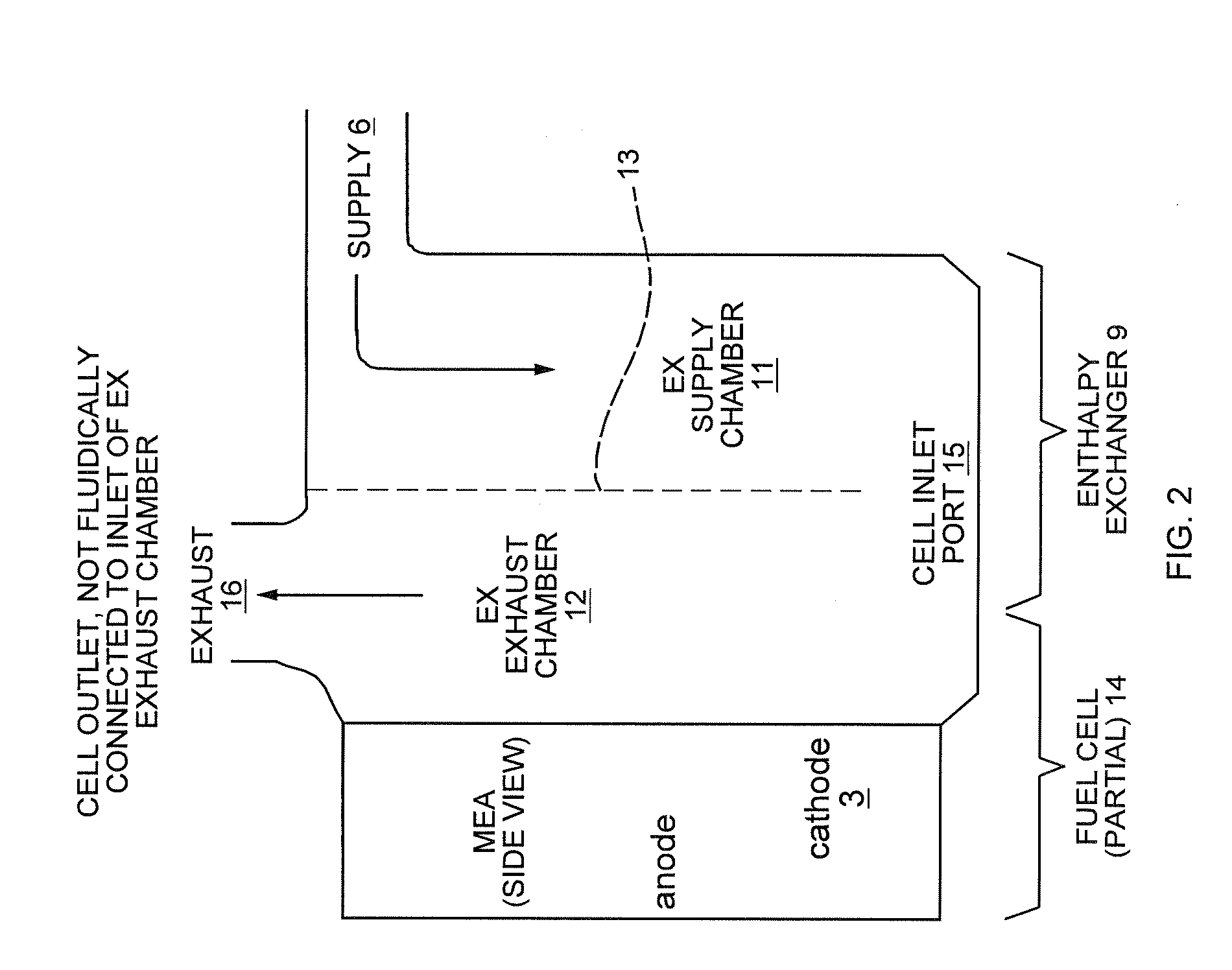Method and apparatus for internal hydration of a fuel cell system
a fuel cell and internal hydration technology, applied in the field of fuel cell systems, can solve the problems of affecting reducing the efficiency of the fuel cell system, so as to achieve the effect of substantially reducing the dry-out of the cathod
- Summary
- Abstract
- Description
- Claims
- Application Information
AI Technical Summary
Benefits of technology
Problems solved by technology
Method used
Image
Examples
example
[0039]The embodiment of the present invention illustrated in FIG. 4 was tested and the test was performed using a fuel cell with about 12 square centimeters of cell area. The operation comprised an anode flow of about 0.5 milliliters per minute of methanol and about 0.7 cubic centimeters of air on the cathode side. The dimensions of the inlet 5 measured perpendicular to the cell area or left to right in the figure was about 0.03 inches. The protonically conductive layer plus diffusion layers was about 0.025 inches thick including a protonically conductive of 0.001 to 0.005 inches thick. The exhaust chamber 12 and supply chamber 11 were each about 0.03 inches wide in diameter. The cathode flow was present at the air inlet 6 at a pressure of about 0.3 psi. The fuel cell was run at a temperature of 80° C. This produced power output capacity of about 50 milliwatts per square centimeter of cell area.
[0040]It should be further noted that the air inlet supply and exhaust will be enhanced u...
PUM
| Property | Measurement | Unit |
|---|---|---|
| protonically conductive | aaaaa | aaaaa |
| enthalpy | aaaaa | aaaaa |
| volume | aaaaa | aaaaa |
Abstract
Description
Claims
Application Information
 Login to View More
Login to View More - R&D
- Intellectual Property
- Life Sciences
- Materials
- Tech Scout
- Unparalleled Data Quality
- Higher Quality Content
- 60% Fewer Hallucinations
Browse by: Latest US Patents, China's latest patents, Technical Efficacy Thesaurus, Application Domain, Technology Topic, Popular Technical Reports.
© 2025 PatSnap. All rights reserved.Legal|Privacy policy|Modern Slavery Act Transparency Statement|Sitemap|About US| Contact US: help@patsnap.com



